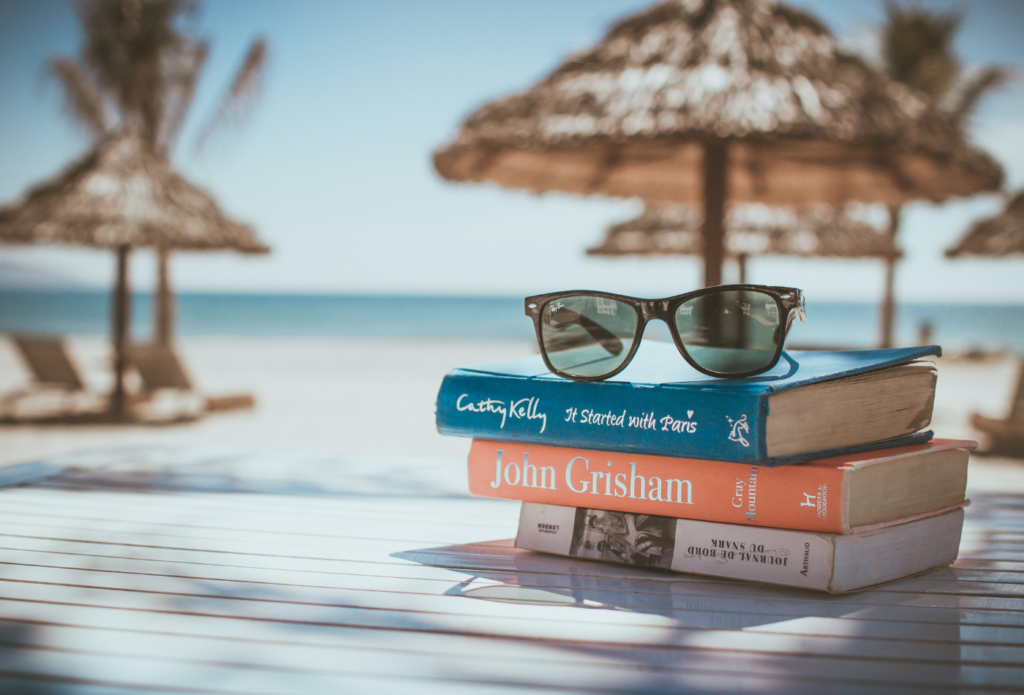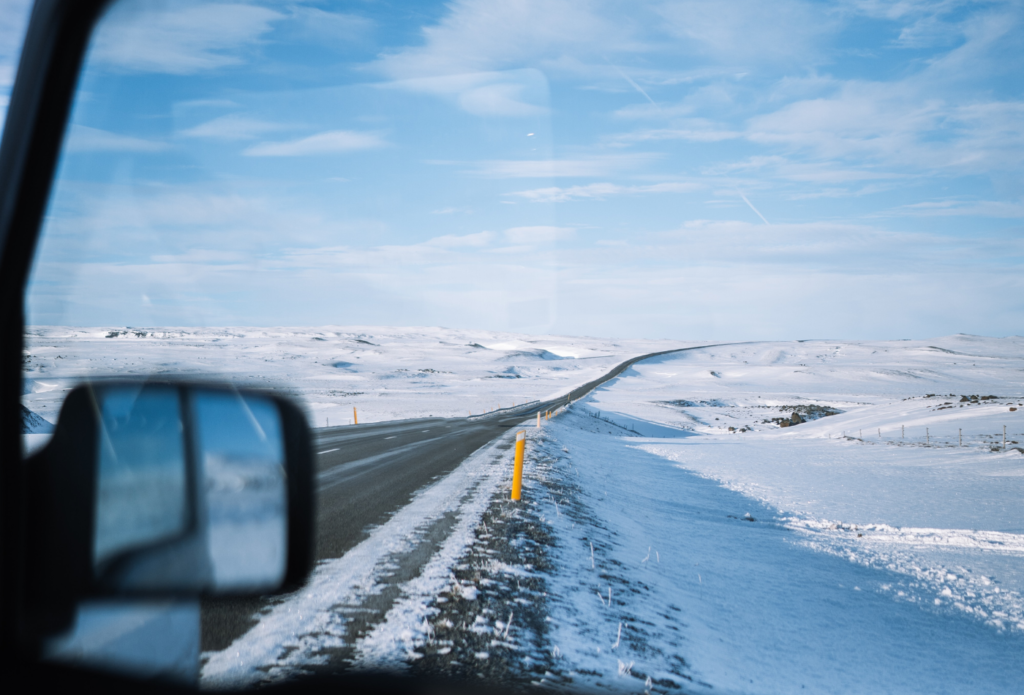
Some people travel the world and make a living out of it. Others write travel blogs to increase traffic to their brand’s website. Whatever reason leads you to share your experiences exploring the globe, here are our favourite travel article examples to inspire your writing.
Why you need a blog on your travel site
Travel content can take many different forms. From brochures that line the shelves of travel agents to website destination pages and social media posts, finding the right words is essential when selling destinations or experiences. People look forward to holidays; they work hard to save their pennies and annual leave to enjoy time in a different country or place.
‘Nothing will help your travel company stand out from the crowd like quality content’, says Search Engine Journal and good travel content includes copywriting that makes these once-in-a-lifetime trips seem worthwhile. It tells its readers exactly what to expect and why they will love it.

While over 80% of holidaymakers head to the web to start planning their holidays, 33% of travellers use travel blogs for travel advice. For travel agents, publishing the right travel content puts you at the advantage of increased website traffic. Businesses that blog experience up to twice as much traffic as those that don’t.
Gaining authority in search is a competitive sport. Google needs to trust that you can deliver exceptional content to users. A well-informed blog that provides extra information, a little entertainment, and click-worthy quotes or stats goes a long way. By writing SEO-optimised travel articles, you can get search engines on your side, increase your site’s authority, and, with the right words, guarantee more business.
Our favourite travel article examples
Thomas Cook
Thomas Cook uses their travel blog to share destination highlights, itineraries and places to visit in many of the locations where they host their package holidays. In this sample travel article, Thomas Cook writes about the ‘Top 5 hidden gems in the Algarve’. Here’s what they do well:
- It’s structured with subheadings, varying sentence lengths and short paragraphs.
- It offers ‘top tips’ segments to provide insider information tailored to its consumers.
- It knows its audience. Phrases such as ‘Instagrammable beach’ appeal to the young women likely to be considering booking a girl’s trip to Portugal.
- It takes you on a journey. Illustrative and colourful, the description of each attraction leads you on a path through the intricacies and experiences on offer.

L’Hotel
L’Hotel, a well-known luxury hotel in Paris, use its blog to provide potential customers with travel blogs that cover niche topics, including history and the various influences of the hotel. In this blog, L’Hotel looks at the famous guests who have visited their hotel – and shares their favourite quotes from one of the most famous residents, Oscar Wilde, who stayed there many times. This is what this travel blog writing example does well:
- It provides a unique perspective while delving into the hotel’s history which is likely to appeal to tourists visiting Paris.
- It’s well-structured with clear headings and is organised logically to flow well.
- It’s written in a conversational, authentic tone that conveys the hotel’s values in an accessible and digestible format.
- It signposts a clear call-to-action that allows readers to share their favourite moments of the hotel with them, including reviews and photos.


Condé Nast Traveler
Condé Nast is well-known for their glossy, editorial-style articles that share the world’s most unique and wonderful experiences. They’re descriptive, they’re detailed, and they are excellent examples of storytelling. The writer delves into Egypt’s past through local stories in this travel article example. Here is what it does well:
- It zooms in on detailed snapshots of place and time, offering immersive accounts of time spent in Egypt.
- It’s personal. This article is written in the first-person narrative, and it contains insight into the writer’s individual experiences while advising on what to expect and how to handle certain situations.
- It’s written in-depth. Although long, the article doesn’t lack attention-seeking snippets of information.
- It features stunning imagery taken by the author, illustrating the picturesque locations described in the copy.

Hays Travel
Independent Travel Agent Hays Travel uses its blog to suggest holidays its audience may enjoy based on interests, the seasons and the attractions they offer. In this travel blog writing example, Hays Travel shares their top destinations to visit for the best Christmas markets. This is what they did well:
- It provides vivid and engaging descriptions of each Christmas market, giving readers a sense of what to expect in terms of atmosphere, activities, and unique offerings at each location.
- It covers a diverse range of Christmas markets in different European cities, catering to a wide audience with varying travel preferences.
- It offers practical information, such as the dates when the markets take place, unique attractions, and tips on what to do at each location. This information is helpful for travellers planning their trips and looking for recommendations.
- It adds a personal touch to the descriptions, such as mentioning specific dishes, traditions, and unique features of each market.

The Ultimate Travel Company
The Ultimate Travel Company are an independent travel agent that uses its knowledge of destinations across the globe to create tailor-made holidays and tours. In this sample travel article, the brand shares insight into the time they spent discovering Estonia. Here is what they did well:
- It provides practical information such as how to navigate Tallinn on foot, the location of the markets and the best hotels to stay in.
- It shares recommendations for excursions and activities that can be enjoyed in Estonia based on the writer’s personal experiences. These are unbiased and given in detail.
- It’s descriptive and illustrative in its narrative while also being organised efficiently to flow smoothly.
- The blog supplies particular itineraries for travel in Estonia, including the option to pair the trip with a visit to Helsinki for a twin-city break.

Easy Jet
easyJet – the nation’s favourite budget airline. Known for its super cheap flights across Europe, the brand shares frequent travel articles on its blog, the Traveller. In this particular travel article, easyJet shares its take on the most beautiful islands in Europe. This is what they did well:
- The highly immersive article uses great adjectives to help readers visualise the place. Our favourites include notebook scribbling, tottering, tumbling, and svelte.
- It’s well-structured, using sub-headings for each of the islands it discusses, and ‘must-see’ pull-out quotes add a little intrigue.
- Call to action is used well in each section, allowing readers to head straight to the booking page for package holidays and flights.
- It’s long and in-depth. It’s not a listicle confined to 500 words; this blog offers plenty of holiday recommendations to suit a variety of tastes.

Avalon Waterways
Avalon Waterways provide river cruises on some of Europe’s most famous rivers. Sailing through multiple countries at a time or docking in one particular spot for the duration of a holiday, holidaymakers can explore sites and relax in great company. With many options, their blog shares details of various trips and itineraries with its readers to help them choose. This is what we can learn from this travel article example:
- It’s practical. This blog offers in-depth information on what to expect on one of their cruise routes on the Rhine.
- It highlights attractions and sites guests can enjoy on their travels.
- It used vivid language to describe the routes taken, crafting illustrative imagery in readers’ heads.
- It includes customer testimonials and case studies to share their experiences on the boat.


Radisson Hotels
This European hotel chain uses its blog to sell its hotels’ destinations. In this particular travel article example, Radisson Hotels relies on sensory storytelling to share their take on a holiday in Venice. This is what they did well:
- It puts their hotel in the front seat. Evolving the story around a stay at their canal-side location shows readers how they can craft the most memorable stay.
- It uses sensory words to immerse the reader in a detailed experience, from sharing their favourite food experiences to attractions that will ignite sound, taste and smell.
- It includes valuable links to book the attractions it mentions and provides readers with practical advice, including the best times to visit.

Be My Travel Muse
A slightly different kind of travel blog to many others on this list, Be My Travel Muse is an independent blog that reviews and shares tips, advice and stories from travelling. In this blog post, the writer shares their experiences in Paris as a solo traveller. Here is what this travel blog post example does well:
- It provides actionable advice based on personal experiences to help keep solo travellers safe. It doesn’t assume that you know anything, so it’s easy to understand and digest with clear explanations.
- It offers a fresh viewpoint on a city commonly dubbed the ‘city of love’.
- It’s conversational and personal. The writing style makes it feel like you’re receiving advice from a friend.
- It is accompanied by striking original imagery that helps readers visualise what is being explained or explored in the text.

Great Rail Journeys
Great Rail Journeys is a train travel company spanning mainland Europe. Known for the Glacier Express and other picturesque trips, they’re a one-stop-shop for booking holidays by train. The brand shares its favourite sustainable winter holidays in this travel blog post example. Here is what they do well:
- They write with their brand values in mind. Great Rail Journeys champions greener travel, and this blog has sustainability at its core.
- It goes beyond their product offering and shows readers how to embody these values in every aspect of their holiday planning.
- It offers unique ideas to inspire customers’ holiday itineraries, from local cuisines to try, to initiatives to support while travelling.

Our top tips for good travel writing
Scrolling these travel blog examples should give you an idea of what makes a decent blog. But for some fairly defined advice, here are our top tips for good travel writing.
Find out about our travel copywriting service »
Get personal
Your travel copywriting needs to be personal. The words you write hold a lot of weight and need to form an intimate conversation with your reader. When read by your target customers, they need to feel like that travel blog was meant for them. If you strike the right chord, it’s a lot more persuasive.
“There is your audience. There is the language. There are the words that they use.” – Eugene Schwartz
How to write conversational copy?
- Use your customer’s words, not industry jargon.
- Involve the reader in your copy by breaking the fourth wall.
- Don’t be afraid to break grammar rules.
- And you can start sentences with conjunctions
- Load up on personal pronouns.
- Don’t try too hard to impress.
A blog that does this well? Read this travel article example by Ryanair.
Use high-quality visuals
Great photos seal the deal when it comes to writing travel content. Without them, you’ll struggle to keep readers engaged and your blog traffic will find it hard to get off the ground. Include striking imagery in your blog that reels in your reader and compliments the words on the page. Check you have permission to use the images you source or opt for copyright-free imagery from sites like Unsplash.
A blog that does this well? Read this example of a travel article by Nomadic Matt.

Take your readers on a journey
According to the Brand Shop, 55% of consumers are more likely to remember a story than a list of facts, and your travel blog should have a clear start, middle and end. Picture it like a gentle walk through a picturesque valley; you want your customers to feel like they’re walking through the vibrant location you describe in your blog. Hold their hand through areas that already flow into each other in the physical world and make them the main characters in the story. Tell them what they could do in their travels and why they’d enjoy it.
“What matters isn’t storytelling. What matters is telling a true story well.” – Ann Handley
Storytelling best practices:
- Connect with the right audience
- Align the narrative with your brand values
- Be authentic and relatable.
- Grab their attention with striking imagery
- Provoke action at the end of the story
A blog that does this well? Read this travel article example by Wanderlust.
Immerse your readers in detail
The detail in your writing is essential. But we don’t mean explaining everything. We mean picking out details to make your story much more memorable. By being unique, and descriptive and expressing your brand’s personality in your writing, you’re offering readers something they can’t get anywhere else. And that’s important when travel blogs are available to browse in abundance online. Find ways to stand out in your writing, from your tone to the mental imagery you create. Think back to an advert that sticks in your head – for example, Go Compare. It was unusual, but it stuck out and because of that, the money comparison site is front of mind when people need that service.
A blog that does this well? Read this travel article example by Secret Escapes.

Keep it practical
“All the elements in an advertisement are primarily designed to do one thing and one thing only: get you to read the first sentence of the copy.” – Joseph Sugarman
The practicalities of blog writing are like the crucial pieces of furniture that make a place a home. Without them, it’s an uncomfortable experience you exit quickly and without further action. Although descriptive, your blog needs to provide customers with helpful information and details that will actually help them in their holiday planning. You can include:
- Practical itinerary ideas and attractions to see while visiting
- Any information that customers may need to know to keep themselves safe
- Important advice on travel, eating out and places to stay
- A clear call to action at the end of each section or page
A blog that does this well? Read this travel article example by Emirates Holidays.
What next?
Blog writing is a task to get right. Even when you’re equipped with all the tips needed to write well, finding great words doesn’t come naturally for everyone. And that’s even before you consider technical details like SEO. That’s where we come in. We’ve been writing great travel content for some of your favourite brands since before the iPhone. Our team are passionate about travel, and we know how to craft excellent copy that will resonate with your audience. The right words can sell a destination, and we’d love to help your travel blog take off. Get in touch. We can help.
